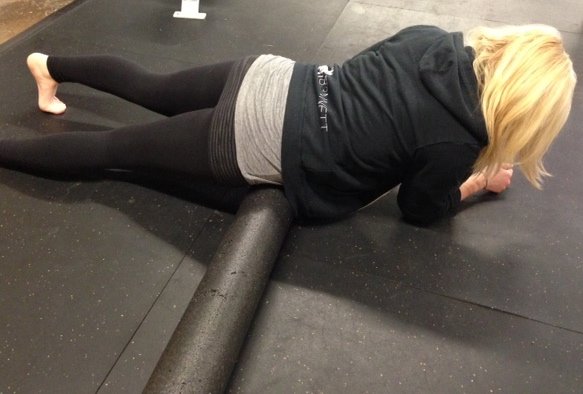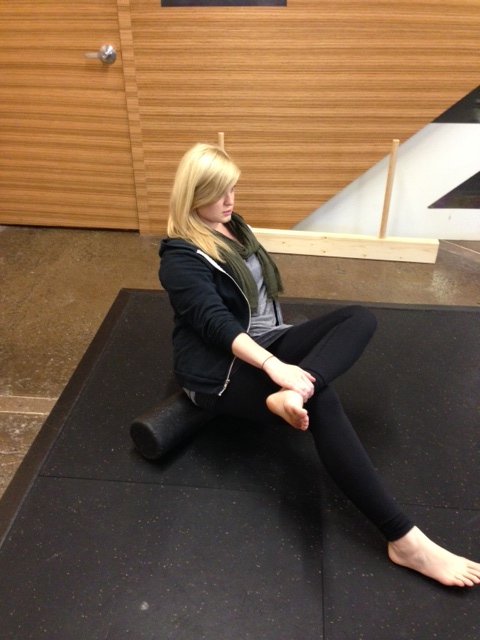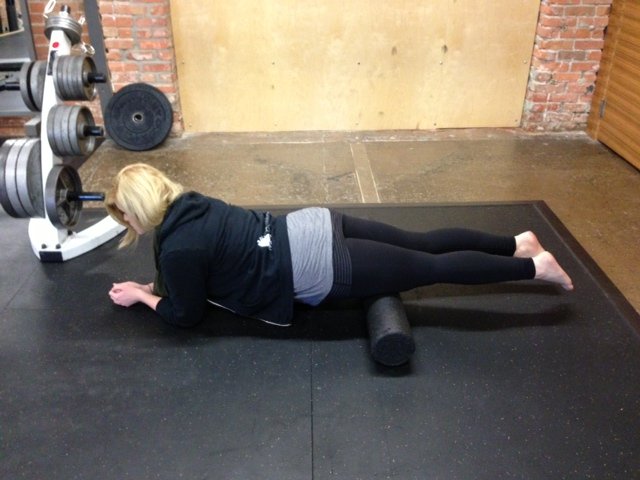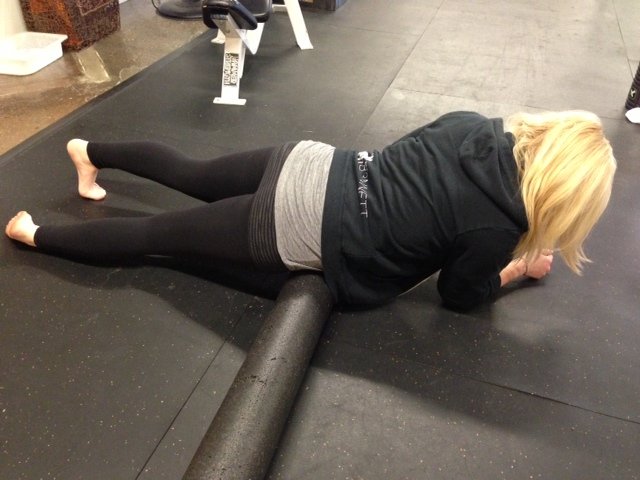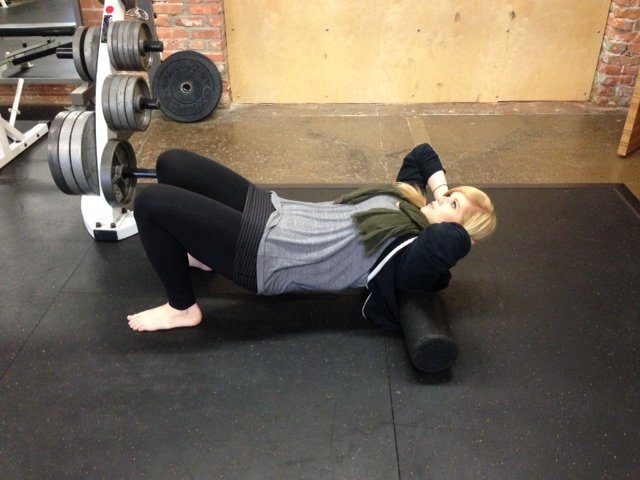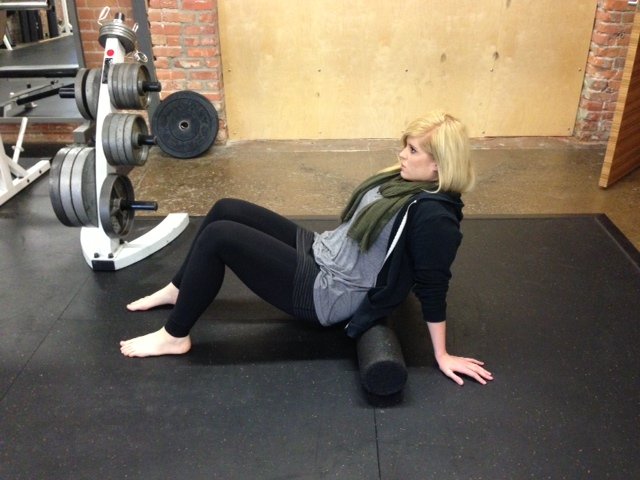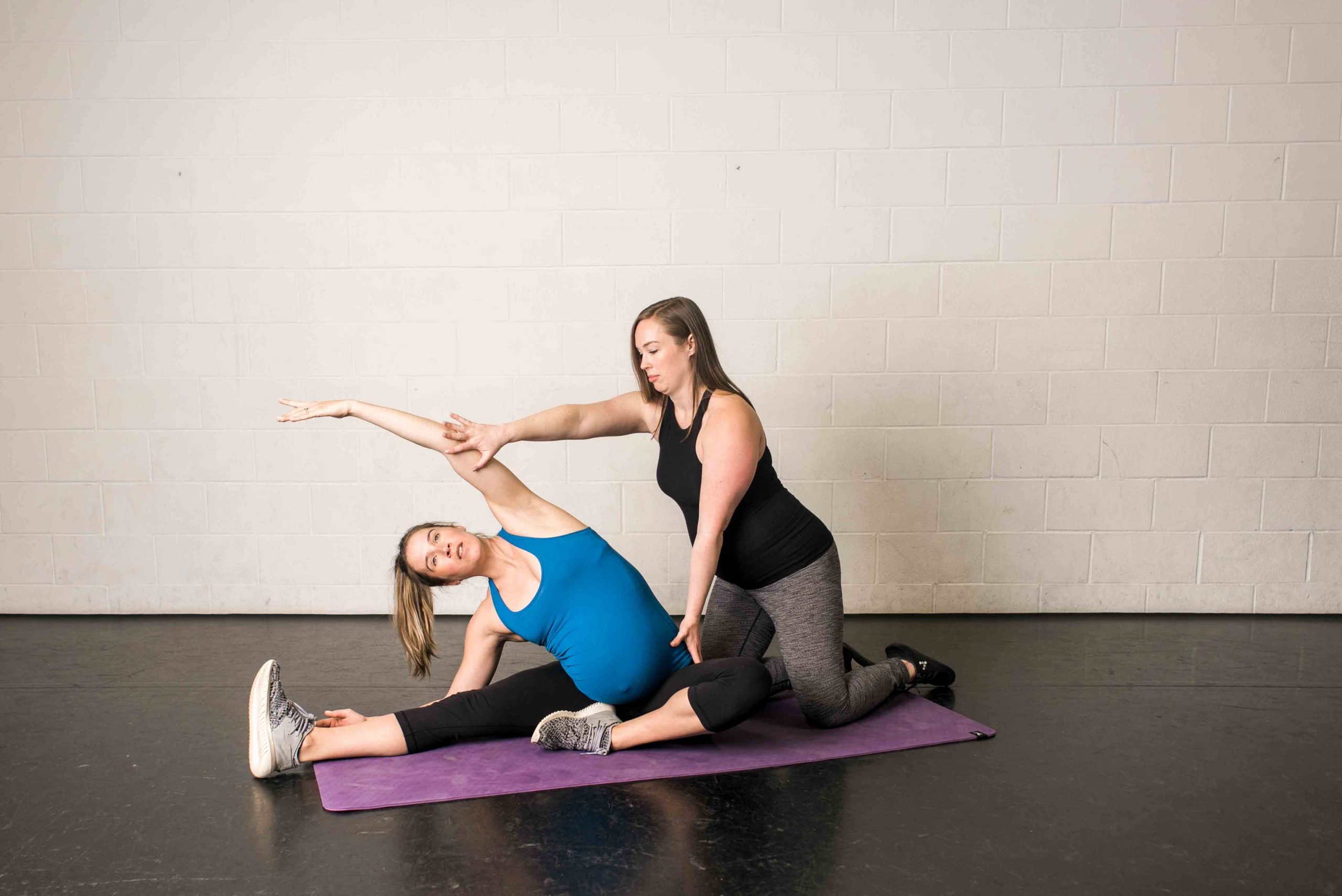Foam, Whaaat?
Ahh, the elusive “foam roller”. If you’ve just walked into a gym for the first time, or have just never used a foam roller, you might wonder why everyone’s rolling around on the ground on hard tubes. The whole “foam rolling” thing is relatively new and different for many gym-goers. You see people rolling their body parts with pained expressions on their faces and might be thinking there’s no way in hell you’re doing that.
Truth? Foam rolling is not the most comfortable thing in the world at times, but it shouldn’t be terribly painful all the time. Personally, I love my time on the roller and feel a bunch better after I’ve spent some time on the glutes, upper back and hip flexors. Even if it does mean a bit of uncomfy-ness here and there (or in the case of the dreaded IT band – everywhere). It can be an acquired taste (or feel), I will admit.
Why Should I Roll?
If you have nagging injuries or chronic soreness – or better yet, if you want to prevent injury, this is for you. Foam rolling is a vehicle of self-myofascial release (SMR). It’s necessary to release adhesions, or trigger points, in your myofascial system (your muscles and your fascia). Wondering what fascia is? I got you. Fascia is connective tissue ALL throughout your bod. It connects muscle to muscle, bone to bone, tendon to ligament, etc, etc.
It even has contractile properties just like your muscles. It basically supports your body, resists movement, creates movement, and helps you stand up straight. Pretty cool stuff.
But What Are Trigger Points?
So now we know that foam rolling is used to release trigger points, but what the heck are those? Trigger points are areas of adhesions in your muscles and fascia. Think of them as tiny, irritable muscle spasms in your body. They interfere with the ability of your muscles and joints to move freely through ranges of motion.
When these ‘active trigger points’ are compressed, as done by using the foam roller, they can feel painful and send referred pain into surrounding parts of the body. For example, you might be rolling on your glutes but feel sensation all the way down to your foot. If you currently foam roll, you know exactly what I’m talkin’ about.
When Should I Roll?
If you weight train, sit at a desk, have injuries, want to prevent injuries, do repetitive tasks at work or at home – you probably could benefit from time on the foam roller. In fact, I think everyone could use some type of soft tissue release.
Now, you can foam roll anytime you like. For best results in your training sessions, I recommend foam rolling BEFORE your workout, without a doubt. You will really feel like this opens up parts of your body that feel sore, uncomfortable, or tight. Especially if your job requires you to be a desk jockey, and you go from work to the car to the gym, definitely jump on the roller for 5-10 minutes before your session.
If you have time AFTER your workout, it’s fantastic to spend a bit more time on the roller here. Spend some time on areas that you may have heavily stressed during your training session.
So, I Don’t Actually Roll?
This might seem odd, but you don’t actually roll that much while foam rolling. You may have seen people rolling before and they were flying back and forth over the roller at the speed of light…don’t do that.
The roller is round so that you can find any trigger points – you’ll know when/if you hit one. It will feel tender and a wee bit uncomfortable. Think about a 6 or 7 out of 10. 6 or 7 = you can still relax your body weight into the roller and breathe, you would describe it as “good pain”.
You get the tender spot and hold. I know, I know. Stay here 30s-60s until you feel the sensation significantly dull. Move onto a different area spot in that general area, or different body part altogether. I typically do 1-2 spots in most parts of my body.
What Parts Of The Body Do I Roll?
Most people need some serious TLC on the areas surrounding the hips – your Glutes (booty), Hip Flexors (front of hip joint into belly), Quadriceps (front of the thighs), and Quadratus Lumborum (lower back beside your spine). Rolling the upper back and between the shoulder blades is a top fave, as well.
Get onto the roller in each of these locations, roll into a tender point, hold the compression on this area until it dulls, then move on to the next spot. You’ll notice as time passes it won’t feel as uncomfortable as you’ll be able to put more bodyweight into the foam roller. Then we’ll get you onto tennis balls, lacrosse, balls, PVC pipe….. 🙂
What Does It Look Like
Glutes –
Quadriceps –
Hip Flexor/Psoas –
Upper Back –
Lower Back –
Roll on (but not really),
JMG

